Chapter 7
The Sculptures, Revisited
Section 6
Bust of a Woman
At first, something seems not quite right with this marble bust of a woman. Indeed, head and bust do not fit. Not only is the latter lopsided and coarsely hewn in the back; it does not really match the neck and features a thick coil on the left shoulder that has no connection to the rest of the head. The bust is obviously a later addition, roughly reworked (a piece above the curl is chiseled off) to support the ancient sculpture of a female head. Slightly over life size, it is turned to the left. The woman’s wavy hair is parted in the middle and loosely combed back, covering the top halves of her ears. Twisted and held together by a headband, her hair ends in a thick, loose bun, from which several strands hang down along the back of the neck.

Bust of a woman at Sonnenberg.
Photo: Annetta Alexandridis.
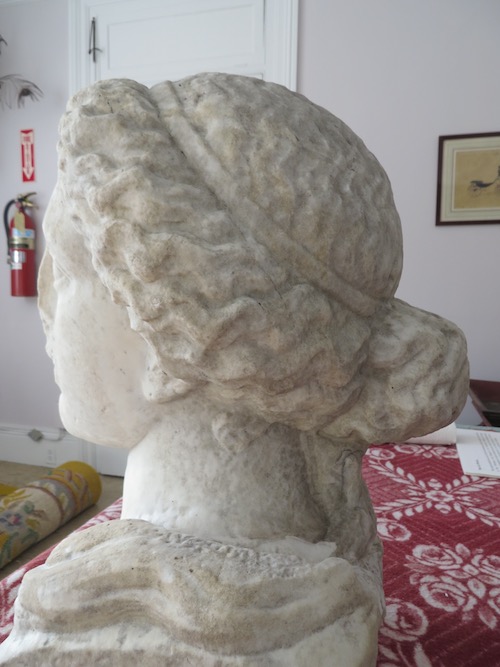
Bust of a woman at Sonnenberg.
Photo: Annetta Alexandridis.
The face displays rather generic, ‘idealized’ features; it is not a portrait. Symmetrically arched brows; large almond shaped eyes; smooth cheeks; thick wavy lips and a heavy chin give it the appearance of a still young, but mature woman.
Such facial features and hairstyles were typically chosen to represent personifications or goddesses such as Aphrodite (in Greek)/ Venus (in Latin), goddess of love and beauty.
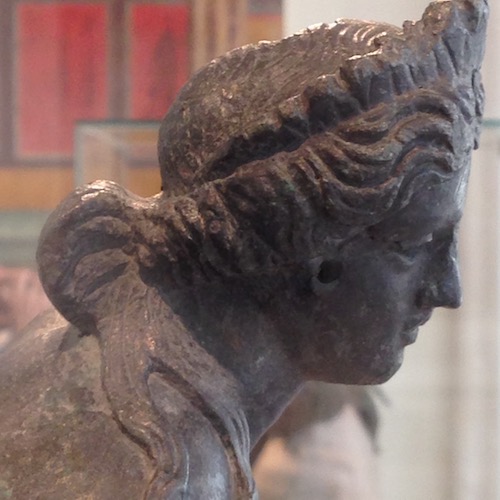
Head of a Roman bronze statuette of Aphrodite; 1st century CE. New York, Metropolitan Museum of Art, L.2014.56.1.
Photo: Annetta Alexandridis.
We have no further definitive clues as to whom the woman at Sonnenberg depicted. But a small rectangular cavity on the upper cranium may have once held an additional object (in metal?), eventually a hair loop, a diadem, or a little crescent moon, attribute of Artemis/Diana, goddess of hunting or of Selene/Semele, the moon goddess.
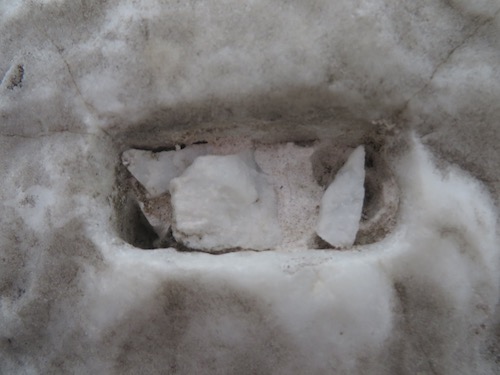
Indentation on top of the female head at Sonnenberg.
Photo: Annetta Alexandridis.
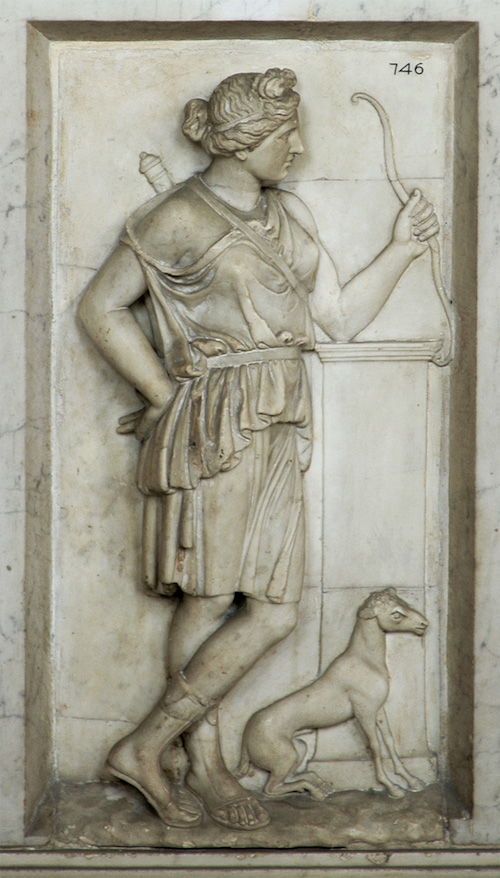
Relief of Artemis with hairloop on top of her head; Vatican, Galleria delle Statue Inv. 746; 1st century CE.
Photo source.
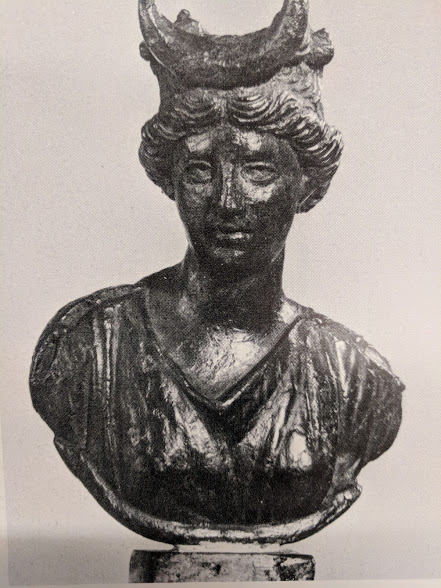
Bronze bust of Artemis/Diana; London, British Museum BM 1006; about 200 CE.
Photo after E. Simon, “Artemis/Diana,” in: Lexicon Iconographicum Mythologiae Classicae II, Düsseldorf and Zürich 1984, no. 909.
Inventories of the Giustiniani collection praise the head a very good work. It was probably carved in the late 1st century or the first half of the 2nd century CE. This is suggested by the sharp outline of the eyes and eyebrows together with the relatively restrained use of the drill which has kept the hair a compact mass. Chin and nose are missing. The losses were once completed as archaeologists and collectors abhorred fragments, as we can still see on photographs of the period, when the marbles were acquired by the Metropolitan Museums. The restorations have since been removed, exposing the drill holes inflicted by earlier restorers.
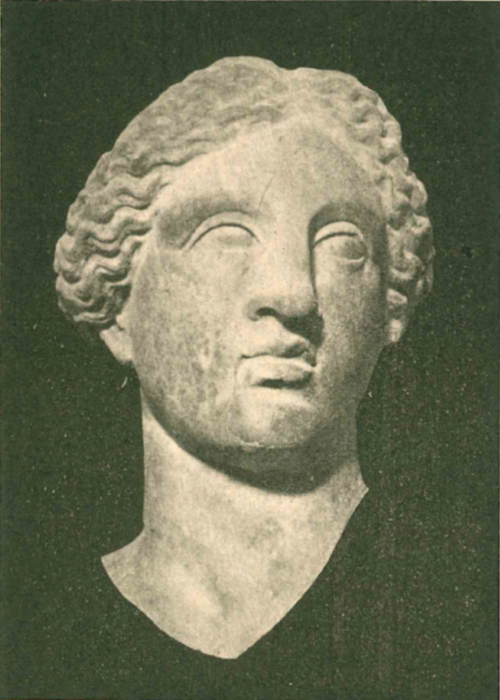
Female bust with restorations from G.E. Rizzo, Sculture antiche del Palazzo Giustiniani, Rome 1905, p. 35. The modern bust is cut out in the photo.
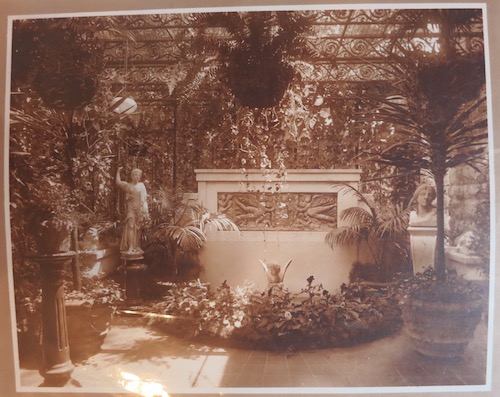
Bust of a woman in the Breakfast Bower, one of its previous locations at Sonnenberg.
Photo: Sonnenberg Gardens and Mansion State Historic Park.
At Sonnenberg, Mary Thompson had it moved around in the Breakfast Bower or her gardens. Various photos show it once in a pedestal next to the fountain, on top of the wall with the sarcophagus relief, or, again on a pedestal, in the Intimate (or Blue and White) Garden. Today, it is on show on the second floor.
A.A.
Ithaca, NY
December 2017